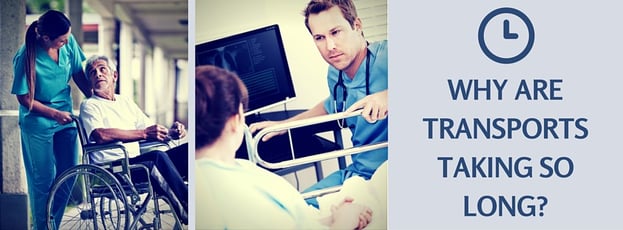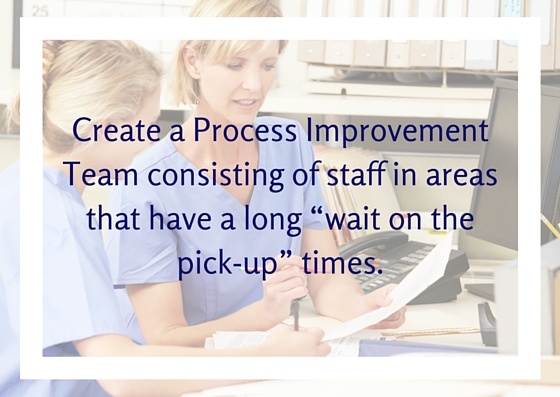
How to Track & Decrease the Transport Timeframe
Have you ever wondered, “what is my staff actually doing up on the nursing units while they are supposed to be picking up a patient for transport?” Have you questioned, “why do my transporters have to wait so long for a nurse or nursing staff member to prepare the patient for transport, or why are we always having to wait for lift assistance? If you’ve asked yourself any of these questions and wondered how you could possibly track this process and the intermediate timeframes without actually shadowing the transporters, then you’ve come to the right place.
We’ll be discussing these common questions and answering one that you may not even have thought to ask: How can I decrease the transport timeframe at my hospital?
The challenges are that you only have so many transporters and the demand for them during certain hours can really put the strain on everyone: the transporters, the Diagnostic & Nursing staff, the patients, and you as the manager (note: even if you aren’t in a managerial role, this article is a good read for anyone involved with the time-consuming transport process).
How can you calculate how long the transporters are up on the Nursing Unit?
Well, you might have some type of report system that indicates how long on average the transports take from request to dispatch, and then dispatch to completion, and you might know how long on average it takes to get the transport equipment needed. You may even know which of your nursing units consistently delay your staff in having the patient ready, or those which may have a lot of equipment to get ready to transport with the patient, or those that are so shorthanded that they always make your staff wait.
But, even with this knowledge, you still probably won’t be able to calculate the average middle timeframe of waiting.
You could try to create this information on your own by having the transporters call a supervisor, coordinator, or dispatcher to give them the time when they arrived to the nursing unit and then again when they leave with the patient. But then you would have to take another staff member to do all of the reporting and calculating, with possible times when a transporter can’t get through to them to give them this information (holding the process up further). This is not efficient.
How can you decrease the transport timeframe?
A solution to this dilemma would be to use a software system that not only tracks all transports, patients, and staff, but would accommodate this process of gathering this additional information by having transporters make very quick (less than 10 seconds) calls to this software system to show their arrivals and departures, as well as any delays that should be documented. Then the subsequent reports will contain this information so you can actually see how long by transporter, by nursing unit and diagnostics, the length of time spent.
Now, what can you do with this information? If you are a normal transport department, I’m sure you have customers – diagnostics especially – that complain to you and your staff constantly that the patients are not getting to them in a timely basis. You could then meet with them and show them how long the staff are up at the pick-up locations (which could include their area too), even possibly by the day of the week, or the hour of the day. Truly an eye opener that now removes the blame from your staff. Then ask this group if they have some suggestions to minimize this wait, or were they even aware of these delays that your staff incur. Get them to be a proactive part of working towards a solution. Create a Process Improvement Team consisting of areas that have a long “wait on the pick-up” times, as well as diagnostic locations that are affected by these wait times. Also, you can use a software solution that notifies the nursing unit when a transporter is assigned to come up to get a patient for transport. If they know when a transporter is in the process, then they can then start to get the patient ready.
Then ask this group if they have some suggestions to minimize this wait, or were they even aware of these delays that your staff incur. Get them to be a proactive part of working towards a solution. Create a Process Improvement Team consisting of areas that have a long “wait on the pick-up” times, as well as diagnostic locations that are affected by these wait times. Also, you can use a software solution that notifies the nursing unit when a transporter is assigned to come up to get a patient for transport. If they know when a transporter is in the process, then they can then start to get the patient ready.
You are now on your way to improving your transport processes and wait times.
You can also do this to improve your transporters efficiencies and productivity, as well as ensuring that they are where they say they are in the transport process.
Want more information about software systems that we mention in this article? We encourage you to explore the PFS Patient Transport System and requesting a free demo to learn more.
Next Steps
Read More Blogs about Patient Transportation
Get more information about our Patient Transport Software
Request an online demo of our Patient Transport Software


